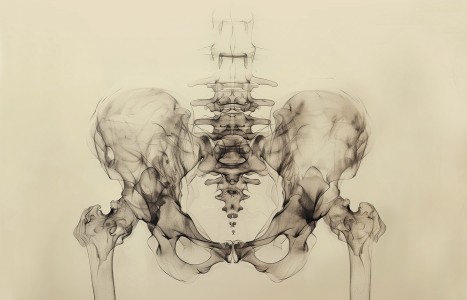People today want convenience, whether it be from their bank, credit card, favorite retail store, or restaurant. They demand it from the companies who hold their loyalty, including their health care providers (you). They don’t want to call and possibly be put on hold, and they want to use an app or schedule an appointment on your website. Here are three reasons your practice can gain by switching to online appointment scheduling.
Treating Rotator Cuff Injuries in Competitive Freestyle Swimmers, Part One
Competitive swimmers must train long hours and, in many cases, multiple times a day in order to achieve their goals. It has been estimated that these athletes swim approximately 6-8 miles (10,000-14,000 meters) a day, 6-7 days a week. Some distance swimmers swim close to 24,000 meters a day, which breaks down to about 16,000 shoulder revolutions per week. This predisposes athletes to microtrauma, due primarily to the athlete's training schedule, leading to injuries. Oriental medicine can help prevent many of these injuries. However, one must understand the biomechanics of the injuries in order to prevent them from occurring. This provides the basic foundation for integrating diagnostic methodologies and treatment strategies of TCM.
The mechanical wear-and-tear of the shoulder joint tends to test positive with the orthopedic Neers and Hawkins tests. With forced shoulder flexion, the impingement occurs on the anterior third of the acromion, but more seasoned athletes tend to develop impingements on the anterior superior glenoid rim of the rotator cuff tendon. The Neers test identifies the impingement of the rotator cuff on the undersurface of the anterior superior glenoid rim. The Hawkins test identifies the impingement of the tendons under the acromion.
The position of the hand during entry into the water is another factor with swimmers and shoulder pain. The freestyle stroke hand-position entry is midway in the Neers and Hawkins tests.
During physical exams, the one thing that tends to get overlooked in swimmers with shoulder pain is the muscle firing of the serratus anterior. If the serratus anterior is not functioning, the movements of the scapula involved are upward rotation and abduction, which rotate the upward movement of the acromion
Kinesiologist Perspective: Swim Stroke
Swimmers who do not have shoulder pain, have a definable pattern of hand entry and exit, which is considered "normal muscle pattern activity."
In swimmers, the shoulder girdle and shoulder joint work synergistically, allowing movement to occur. The girdle produces scapular movements while the shoulder joint produces humeral movements. In order to identify what muscles fire (and when), one must first know what muscles are in each joint, then the specific moves that particular joint performs. The shoulder girdle includes movements such as elevation/depression, abduction/adduction, and upward/downward rotation. Muscles that are part of the shoulder girdle include the levator scapulae, trapezius (upper, middle, lower fibers), rhomboids (major, minor), serratus anterior, pectoralis minor and subclavius. The shoulder joint includes movements such as flexion/extension, internal/external rotation, horizontal abduction/adduction, and abduction/adduction. Muscles include the deltoids (anterior, middle, posterior fibers), pectoralis major (upper, middle, lower fibers), supraspinatus, infraspinatus, subscapularis, teres major, teres minor, latissimus dorsi and coracobrachials.
Another important piece of information is differentiating between agonist and antagonist movers. Agonist movers are the movements within the contracted phase of muscle; antagonistic movers are the lengthening phase of the opposing muscle. So, we are identifying the muscle activity during the shortened and lengthened phase of the swim stroke in four different phases: 1) hand entry; 2) pulling action; 3) propulsion and 4) transition.
- Hand entry (forward reach). This phase focuses on scapular movements where the upper traps elevate, the rhomboids adduct, and the serratus anterior rotates upward and abducts. These muscle movements position the glenoid fossa humeral head with shoulder abduction and flexion of the supraspinatus and anterior/middle deltoid as the hand reaches forward for the water. A key point here is that the force exerted synergistically of the supraspinatus and the deltoids at the insertion points is vital to the mechanics of the shoulder. The supraspinatus inserts closer to the rotational axis. Thus, the supraspinatus has the primary role that levers the humeral head within the glenoid fossa.
- Pulling action (actual pulling of the body over the arms). The initial power comes from this shoulder joint mover as the pectoralis major adducts, extends and rotates internally. Along with the pectoralis major's internal rotation, the teres minor fires as it provides the antagonistic external rotational force. Because the teres minor inserts closer to the rotational axis, it keep the head of the humerus congruent with the glenoid. The teres minor and infraspinatus insertions are at the same location; however, the teres minor is the force, rather than the infraspinatus, because of the angle of fibers and lower insertion point.
- Propulsion (pull-through). Crossing the mid pull-through point, the latissimus dorsi is the primary propulsion mover. The subscapularis and the lats are both internal rotators. However, the subscapularis inserts closer to the rotational axis, keeping the humeral head approximated in the joint.
- Transition stroke. Once the lats have peaked, the posterior deltoid takes over and provides the final part of the pull with the shoulder joint in extension, lifting the arm out of the water.
Throughout the entire freestyle stroke, the subscapularis (internal rotation) and serratus anterior (stabilizing the scapula) continually fire at an estimated 20 percent above their maximum.
Kinesiologist Perspective: Injury Pattern in a Swim Stroke
This identifies the swim stroke that is compensating because the muscle is fatigued, and possibly injured, creating what is called "painful muscle pattern activity."
In hand entry, there is a possible decrease in firing of the upper traps, rhomboids and delts (anterior/middle). Many times during hand exit, if the delts are not firing, the elbow drops. This means the swimmer is entering the water with a wider entry in order to avoid any pain (wider entry avoids impingement [Neer/Hawkins]). That is why coaches will tell swimmers, "elbows up, elbows up." Unfortunately, most of the time this is thought to be just muscle fatigue, rather than the initial onset of an injury.
These swimmers present with decreased firing of the serratus anterior during the mid-pull-through phase due to fatigue, most likely causing the scapula to "float." This causes the rhomboids to compensate significantly, increasing their firing pattern in order to stabilize the scapula.
Another possible issue is decreased firing of the subscapularis due to fatigue. This will cause the infraspinatus to increase its firing capacity in order to compensate; again, opposing muscles are balancing one another. One really common compensation factor creating the same end result is that the subscapularis will not fire in certain angles of movement in order to avoid pain in internal rotation, causing the infraspinatus to "pick up the slack" on internal rotation of the humerus.
Injury Cycle Typical of Swimmers
This cycle begins with pain that starts with microtrauma and progresses into muscle fatigue and weakness. It further develops into laxity of the ligaments and stretching of the anterior structures. Over time, this leads to shoulder instability, thus creating pain. If not taken care of, it will progress to subluxations, leading to more serious nerve impingements and, finally, a rotator cuff tear.


